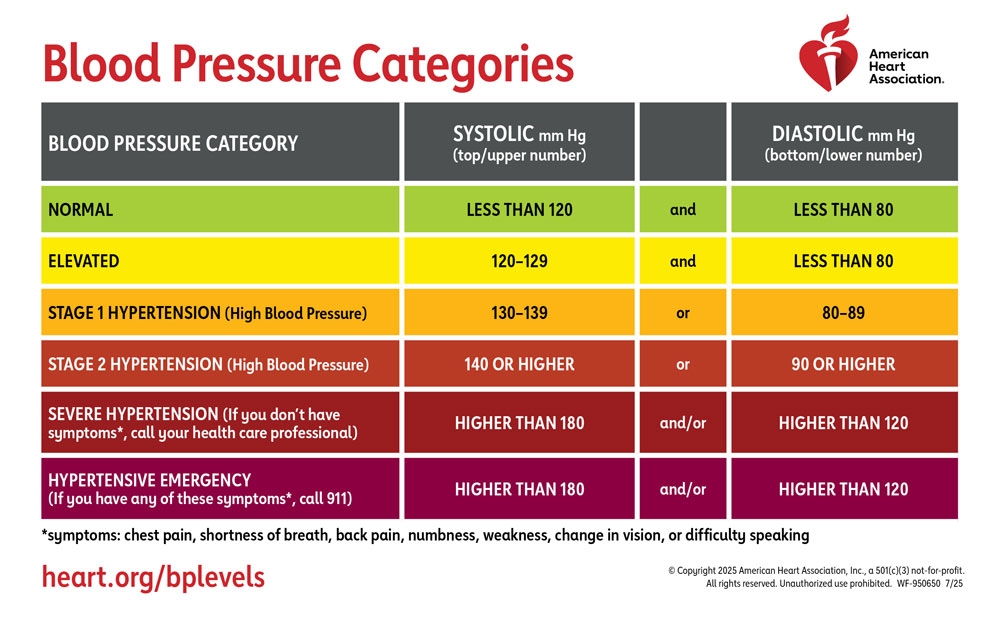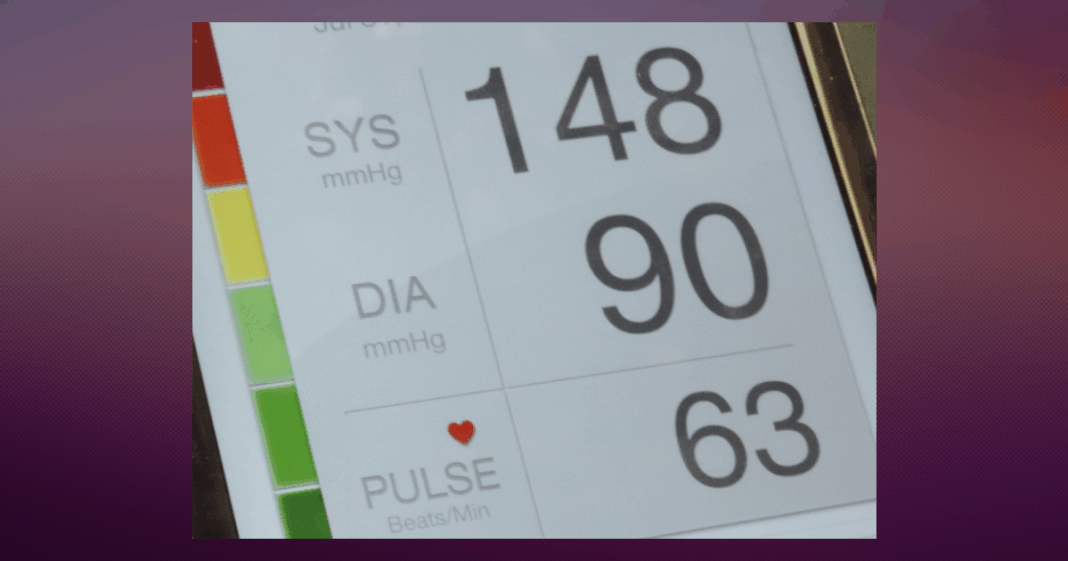- Nearly half of U.S. adults have hypertension; the 2025 joint guideline urges prevention-first care and earlier treatment.
- What’s new: PREVENT™ risk calculator, universal urine albumin–creatinine testing, broader aldosterone–renin screening, and tighter pregnancy/postpartum management.
- BP categories remain unchanged from 2017; the update highlights brain health, lifestyle goals, and tailored medication (including single-pill combos; GLP-1 options for some).
The Big Picture
A new joint clinical guideline from the American Heart Association and the American College of Cardiology, published Aug. 14, 2025, reframes hypertension care around prevention and earlier intervention. The document keeps the 2017 blood pressure thresholds but strengthens guidance on lifestyle, timely medication, kidney and hormone screening, pregnancy care, and brain health—echoing evidence that controlling blood pressure sooner reduces cardiovascular events and cognitive decline.
What’s New

Risk-first care with PREVENT™. Clinicians are directed to use the AHA’s PREVENT™ calculator (10- and 30-year estimates for adults 30–79) to personalize treatment based on cardiovascular, kidney, and metabolic health, with social drivers incorporated by ZIP code.
Sharper diagnostics. Two key testing changes: the urine albumin-to-creatinine ratio is now recommended for all adults with hypertension to detect kidney injury; and indications expand for the plasma aldosterone-to-renin ratio to screen more patients for primary aldosteronism—including those with obstructive sleep apnea and many with stage 2 hypertension.
Medication strategy. For many people—especially with Type 2 diabetes, obesity, or kidney disease—more than one drug may be needed to reach <130/80 mm Hg. Stage 2 hypertension (≥140/90) continues to favor starting two agents in a single-pill combination when possible. The guideline also notes the possible addition of newer therapies, including GLP-1 medications, for some patients with hypertension and overweight or obesity.
Pregnancy and postpartum. Counsel on low-dose aspirin for preeclampsia prevention; initiate treatment for chronic hypertension at ≥140/90 mm Hg during pregnancy; and maintain close postpartum monitoring because risks can emerge or persist after delivery.
Brain protection. Because sustained high BP damages small brain vessels and raises dementia risk, the update supports earlier treatment in adults with hypertension with a systolic goal below 130 mm Hg to help preserve cognition.
What They’re Saying
Context
Hypertension affects 46.7% of U.S. adults and remains the #1 preventable risk factor for cardiovascular disease, contributing to heart attack, stroke, heart failure, kidney disease, and dementia. The blood pressure categories are unchanged from 2017: normal (<120/80 mm Hg); elevated (120–129/<80); stage 1 (130–139 or 80–89); and stage 2 (≥140 or ≥90). The update was developed by the AHA/ACC Joint Committee on Clinical Practice Guidelines and endorsed by 11 additional professional organizations, reflecting broad clinical consensus.
What’s Next
Health systems are expected to integrate PREVENT into EHRs, standardize kidney and endocrine screening at diagnosis, and expand use of single-pill combinations for stage 2 hypertension. For patients, the path is practical: cut sodium toward 1,500–2,300 mg/day, limit or avoid alcohol, increase activity (75–150 minutes weekly), pursue at least 5% weight loss if needed, manage stress (e.g., breathing or meditation), follow heart-healthy eating patterns (such as DASH), and use home blood pressure monitors to confirm office readings and guide therapy.
The Bottom Line
This is a prevention-first guideline built for real-world care. By combining smarter risk tools, earlier targets, specific lab pathways, pregnancy/postpartum safeguards, and tailored medications—including options for patients with obesity—the 2025 update aims to reduce heart attacks and strokes and protect brain health over the long term.
A global media for the latest news, entertainment, music fashion, and more.















